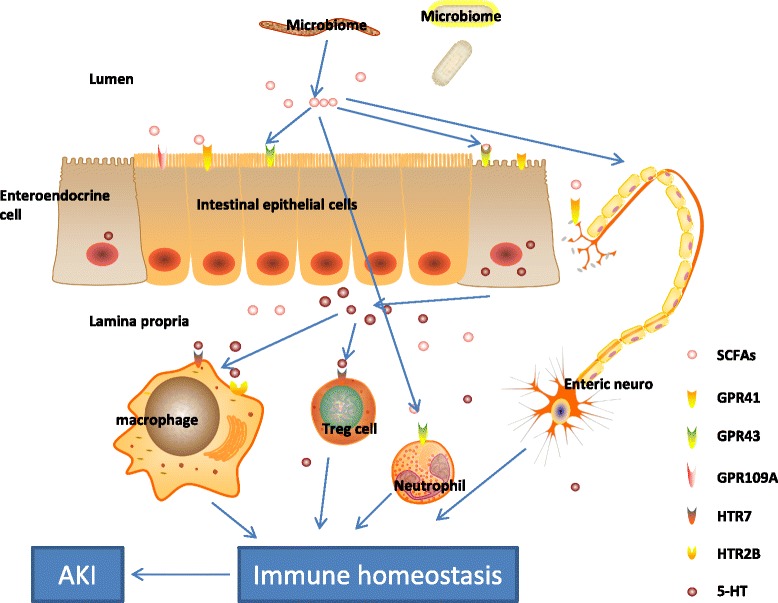Fig. 4.

SCFAs, including acetate, propionate, and butyrate, are produced at high concentration by bacteria in the gut and subsequently released in the bloodstream. Receptors for SCFAs are G-protein-coupled receptors, GPR41, GPR43, GPR109A. Propionate is the most potent agonist for both GPR41 and GPR43. Acetate is more selective for GPR43, whereas butyrate and isobutyrate (nicotinic) are more active on GPR41. GPR41 is expressed in a number of tissues. GPR43 is selectively expressed in leukocytes and recruited toward sites of bacterial infection. Nicotinic acid can be anti-inflammatory in monocytes. Butyrate can also inhibit Jun NH(2)-terminal kinase activation and cytokine transcription in mast cells. SCFAs promote biosynthesis of 5-HT, enhancing T-cell activation by signaling through the 5-HT7 receptor, skews human macrophage polarization through HTR2B and HTR7, and activates immune responses and inflammation
